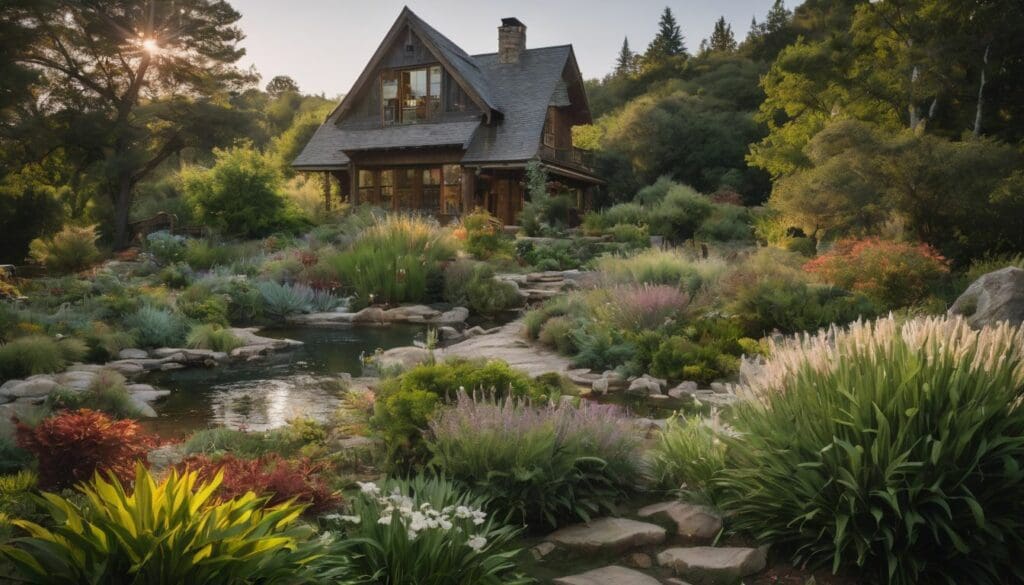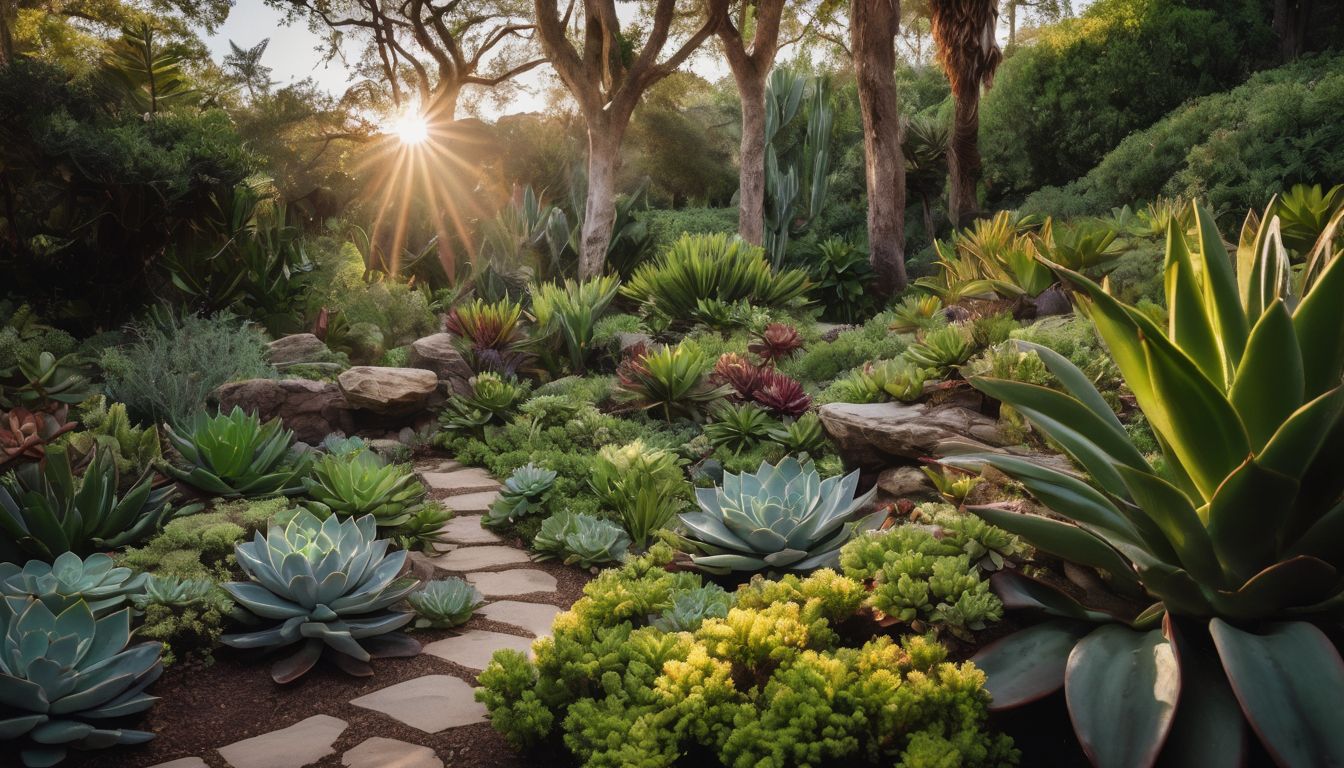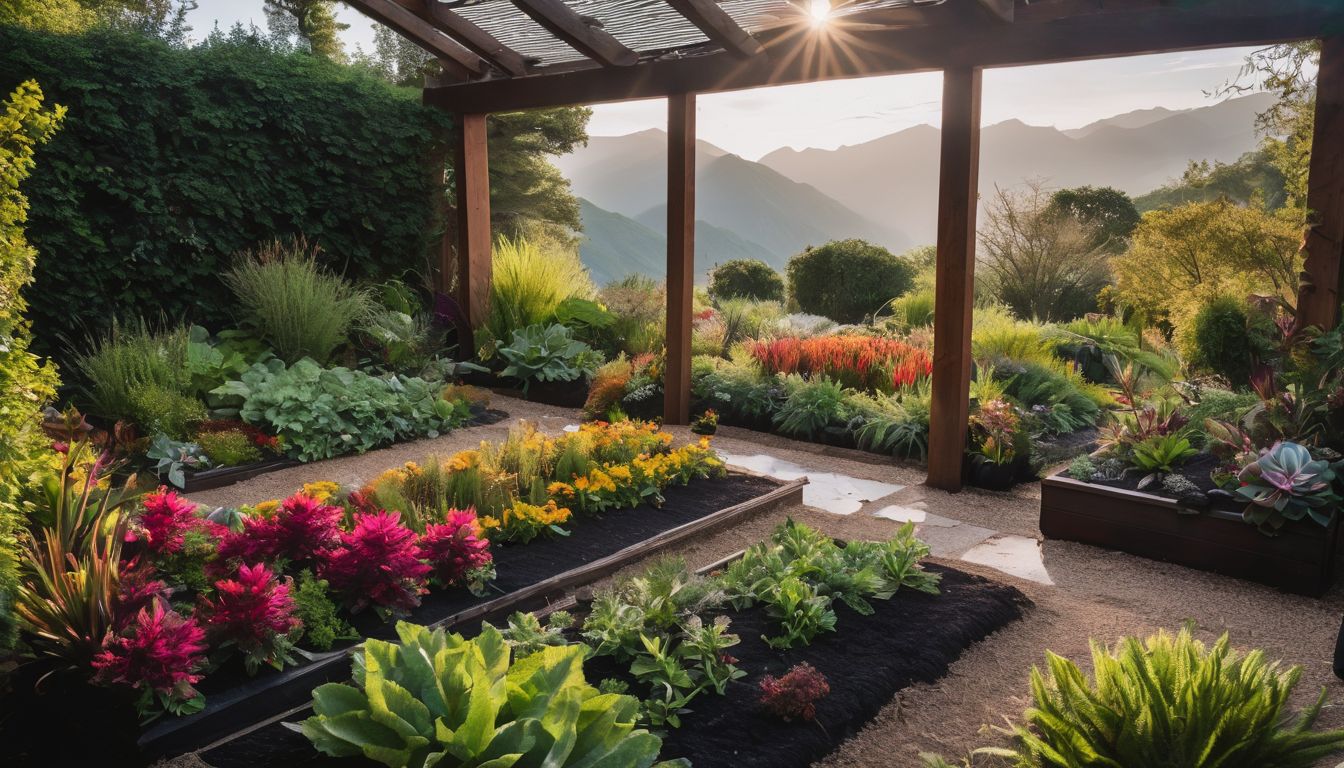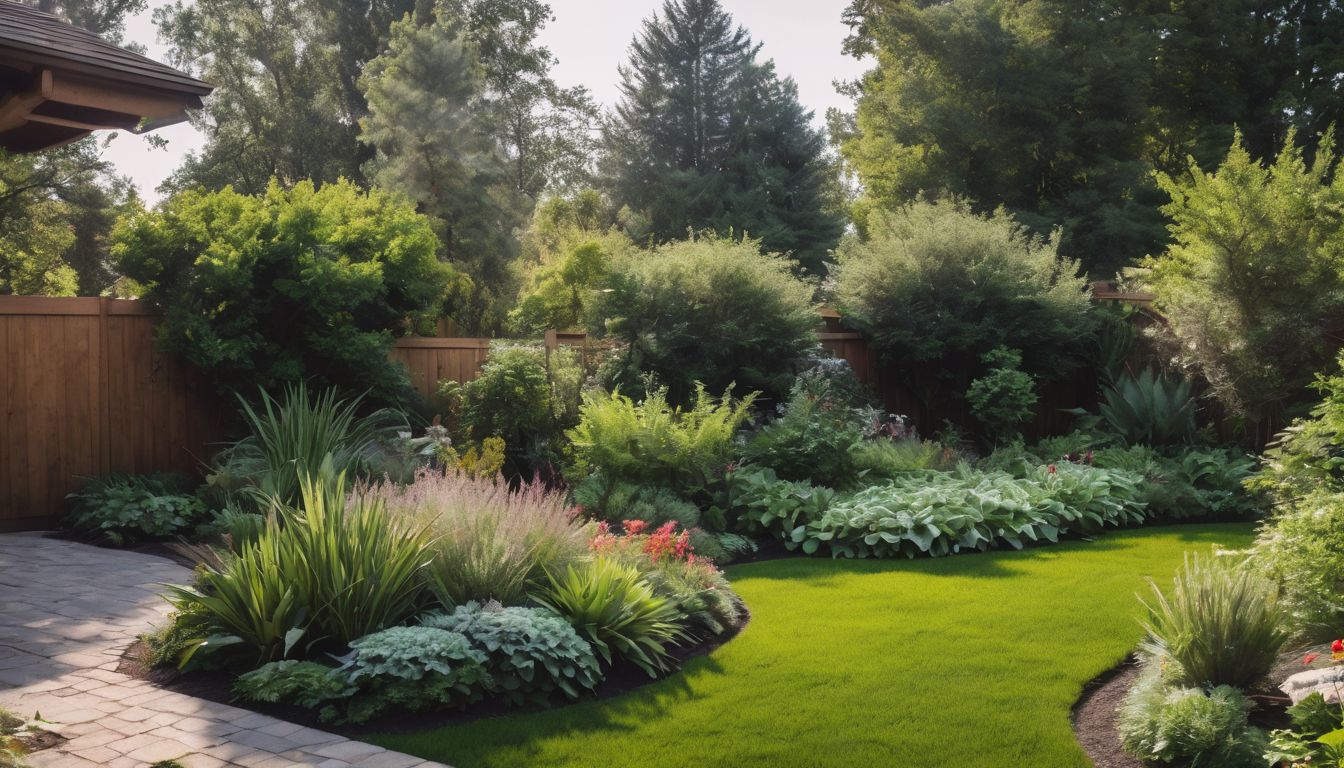Gardens can sometimes struggle to thrive, and it’s often because they lack the right plants. Native plants are those that occur naturally in a region, evolved to flourish in local conditions.
This article will reveal why filling your garden with native species creates a healthier, more sustainable space for both flora and fauna. Discover how going native makes all the difference!
Key Takeaways
- Native plants are crucial for maintaining ecological balance by supporting a range of local insects, birds, and animals essential for ecosystem health.
- Including native species in your garden promotes biodiversity, attracts pollinators and songbirds, and requires less maintenance due to their adaptation to local conditions.
- Growing native plants contributes significantly to environmental conservation efforts by reducing the need for water and chemicals. They also help mitigate noise pollution.
- Non – native plants can disrupt ecosystems by outcompeting indigenous species; they may need more resources to maintain and sometimes become invasive.
- To add native plants to your garden effectively, research which ones thrive in your area, consult with local experts, and aim for a diverse mix that fosters a balanced ecosystem.
The Importance of Native Plants in Gardens
Native plants play a crucial role in maintaining ecological balance. They have evolved to thrive in specific regions, making them well-suited to local soil, climate conditions, and wildlife.
These indigenous species form the foundation of regional ecosystems by supporting a variety of insects, birds, and other animals that rely on native flora for survival.
Choosing native plants for your garden bolsters biodiversity and aids environmental conservation efforts. It creates natural habitats for pollinators such as bees and butterflies while providing essential food sources for songbirds.
Landscapes rich in native species are not only aesthetically pleasing but also contribute significantly to ecosystem services like purifying air and water. By integrating these resilient plants into your outdoor space, you support sustainability practices that can lead to a healthier planet.
Benefits of Including Native Plants in Your Garden
Native plants in your garden can preserve biodiversity, support pollinators, and attract songbirds. They also require less maintenance compared to non-native plants.
Preserves biodiversity
Native plants play a crucial role in maintaining biodiversity in gardens. By cultivating native species, you support the natural ecological balance and contribute to the preservation of local wildlife habitats.
These plants support a diverse range of insects, birds, and other wildlife, creating a thriving ecosystem that benefits the entire environment.
The inclusion of indigenous plants helps in promoting genetic diversity within the local ecosystem. This is essential for sustaining healthy populations of native species and contributes to the overall resilience of the surrounding environment.
Supports pollinators
Native plants play a crucial role in supporting pollinators, such as bees, butterflies, and hummingbirds. These plants provide essential nectar and pollen sources that sustain these important creatures throughout the year.
By including native plants in your garden, you can create a habitat that attracts and supports pollinators, contributing to the overall health of local ecosystems.
Cultivating indigenous flora in your garden not only adds natural beauty but also actively assists in sustaining local wildlife populations by providing the necessary resources for their survival.
Attracts songbirds
Native plants in your garden attract songbirds, adding natural beauty and delightful melodies to your outdoor space. Their vibrant blooms and abundant seed production provide an appealing food source for various bird species, creating a harmonious environment.
Incorporating native flora into your landscaping not only enhances the visual appeal but also plays a crucial role in supporting local wildlife, contributing to the preservation of biodiversity.
By choosing indigenous plants that attract songbirds, you can create a thriving ecosystem right outside your door. Providing essential resources for these feathered friends is a simple yet impactful way to contribute to environmental sustainability and maintain ecological balance within your community.
As you consider the benefits of attracting songbirds with native plant species, it’s important to understand their profound impact on enhancing the overall health of our ecosystems.
Requires less maintenance
Native plants are low-maintenance and well-suited to local conditions, reducing the need for excessive watering, fertilising, or pest control. With their natural resilience, they thrive in their native environments and require minimal upkeep once established.
This makes them a practical and sustainable choice for environmentally conscious gardeners looking to support conservation efforts through simple yet impactful gardening practices.
Incorporating native plants into your garden not only enhances biodiversity but also decreases the time and effort needed to maintain a healthy outdoor space. By choosing indigenous flora that is adapted to local soil and climate conditions, you can create an eco-friendly garden that flourishes with minimal intervention while providing essential habitat and food sources for wildlife.
Environmental Benefits of Native Plants
Native plants are adapted to local climate and soil conditions, making them more resilient and requiring less maintenance. They also provide nectar and shelter for wildlife, while helping to reduce noise pollution.
Adapted to local climate and soil conditions
Native plants play a crucial role in gardens as they are naturally adapted to local climate and soil conditions. This means they require less water, fertilisers, and pesticides compared to non-native species.
By thriving in their natural environment, native plants contribute to the overall health and sustainability of your garden while supporting the surrounding ecosystem. Additionally, their resilience makes them an excellent choice for environmentally conscious individuals looking to create low-maintenance and sustainable landscapes.
Incorporating native plants into your garden helps conserve water resources by reducing the need for irrigation and supports local wildlife by providing essential food sources and habitats.
Provides nectar and shelter for wildlife
Native plants play a vital role in providing essential nectar and shelter for local wildlife. These species support the ecosystem by offering food and safe havens for various animals, including insects, birds, and small mammals.
By incorporating native flora into your garden, you contribute to the conservation of important habitats for the survival of indigenous wildlife.
Native plants significantly benefit local wildlife by supplying crucial nectar sources and creating natural shelters. This sustains an environment where different species can thrive and contribute to maintaining biodiversity.
Reduces noise pollution
Native plants play a crucial role in reducing noise pollution as they create natural barriers that absorb and deflect sound. By incorporating native flora into your garden, you can help mitigate the impact of urban noise, providing a quieter and more peaceful environment for both humans and wildlife.
The dense foliage, leaves, and branches of native plants effectively dampen sound waves, making them an essential element in creating tranquil outdoor spaces.
Incorporating native plants not only contributes to reducing noise pollution but also enhances the overall biodiversity and sustainability of your garden. As you consider the benefits of including indigenous species in your garden, it’s important to recognise their role in promoting ecological balance and fostering a harmonious coexistence with nature.
Native Plants vs. Non-Native Plants
Native plants require less water and maintenance than non-native plants, making them more sustainable for the environment. Non-native plants can potentially outcompete local species and disrupt the natural balance of the ecosystem.
Differences in water and maintenance requirements
Native plants are well-adapted to local conditions, requiring less water and maintenance compared to non-native species. Native plants have evolved to thrive in their specific climate, soil, and moisture levels, making them more resilient and self-sufficient once established in your garden.
This means less watering and upkeep for you, while also contributing to the overall sustainability of your garden.
When planting native species in your garden, you’ll notice a significant reduction in water usage compared to non-native plants. With their deep root systems and natural resilience, native plants are better able to withstand drought conditions without the need for excessive watering.
Potential negative impacts of non-native plants
While native plants have adapted to local ecosystems, non-native plants may outcompete them. This could lead to a decrease in biodiversity as they often dominate and displace indigenous species.
As a result, the natural balance of the ecosystem may be disrupted.
Non-native plants can also pose a threat by becoming invasive, spreading rapidly and overwhelming the environment. These invasives can alter soil composition, hinder nutrient cycling and water movement and even increase the risk of wildfires in some cases.
How to Incorporate Native Plants into Your Garden
Research which plants are native to your area and choose a diverse range that will create a balanced ecosystem. Consider the specific needs of each plant and how they can thrive in your garden.
Researching which plants are native to your area
To incorporate native plants in your garden, start by researching which plants are indigenous to your specific region. This can be done by consulting local botanical gardens, nurseries, or online databases. Here’s how you can go about it:
- Utilise online resources such as the Native Plant Database from the National Wildlife Federation to identify species that are native to your area.
- Reach out to local conservation organisations or horticultural societies for guidance on native plant species that thrive in your region.
- Visit nearby natural areas and observe the flora growing in their native habitat to get an idea of what plants are well-suited to your environment.
- Consider working with a landscape designer or ecologist who specialises in native plant landscaping for expert advice on suitable species for your garden.
- Engage with local gardening communities through social media groups or forums to gather insights and recommendations from experienced gardeners in your area.
Creating a diverse and balanced ecosystem
Incorporate a variety of native plants into your garden to create a diverse and balanced ecosystem that supports local wildlife. This approach helps in preserving biodiversity, providing essential habitat for pollinators, and attracting songbirds.
By planting indigenous species, you contribute to the sustainability of the environment by ensuring that the ecosystem remains in balance.
By introducing a mix of native plants, you can foster a healthy community of flora and fauna within your garden. This contributes towards creating a sustainable and harmonious environment while supporting conservation efforts.
Conclusion
Incorporating native plants in your garden supports biodiversity and local wildlife. When you choose indigenous flora, you create a sustainable and low-maintenance ecosystem. By embracing the beauty of native plants, you are contributing to the preservation of natural habitats for future generations.
Cultivating native species is not just gardening; it’s an act of environmental stewardship. Start making a difference by incorporating native plants in your garden today!
FAQs
1. Why are native plants important in gardens?
Native plants play a crucial role in the ecosystem, supporting local wildlife and promoting ecological balance in your garden.
2. What benefits do native flora offer to my garden?
Incorporating native plants provides numerous advantages including sustainability, natural wildlife support, and conservation of biodiversity.
3. Can using indigenous plants improve my garden’s environment?
Absolutely! Native plant species contribute to environmental sustainability by requiring fewer resources and creating habitats for local fauna.
4. How does cultivating native plants help with ecological restoration?
When you grow indigenous plants, you’re actively participating in horticulture that supports ecological restoration and helps maintain the area’s natural heritage.
5. What value does landscaping with native flora add to my property?
Landscaping with native plants brings significant value by enhancing the beauty of your property through sustainable gardening practices that align with nature’s rhythm.





